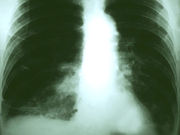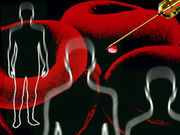Hematology and Oncology
Home Hematology and Oncology
Five Strategies to Reduce Acute Care for Cancer Patients ID’d
Findings include enhanced care coordination, early palliative care, and new loci for urgent cancer care
CTC Status Predicts RT Benefit in Early-Stage Breast Cancer
CTC status linked to longer overall survival in those undergoing breast conserving surgery
In Retinoblastoma Survivors, Oculo-Visual Issues Tied to QoL
Oculo-visual problems associated with functional status, vision-targeted health-related quality of life
Nodal Response to Pre-Op Tx Tied to Survival in Esophageal Cancer
Survival benefit of nodal response maintained among patients with nodal, but not primary response
Palliative Care Consult Can Cut Hospital Costs in Seriously Ill
PCC linked to reduction in hospital costs for hospitalized adults with serious illness
Clinical Upstaging of NSCLC Seen With Each Progressive Week
For clinical stage 1 NSCLC, 21.7 percent of patients upstaged after 1 week; 31.5 percent after 8 weeks
Practices Should Be Aware of Correct Way to Fire Employees
Practices should be aware of basic employment laws in their state, which vary with number of employees
Knowledge of Causes of Cancer Low in General Population
Awareness of actual cancer causes higher than that of mythical causes
April 2018 Briefing – Hematology & Oncology
Here are what the editors at HealthDay consider to be the most important developments in Hematology & Oncology for April 2018. This roundup includes...
Liver-Kidney Recipients Have Donor-Specific Hypo-Responses
Unique characteristics ID'd in peripheral blood cells of simultaneous liver-kidney transplant recipients



















